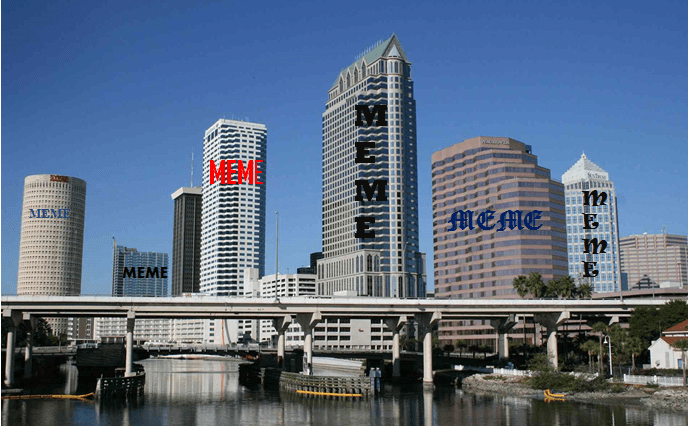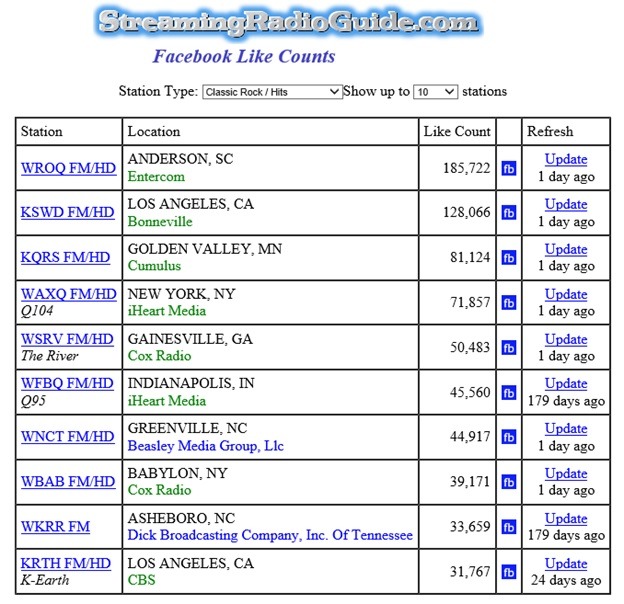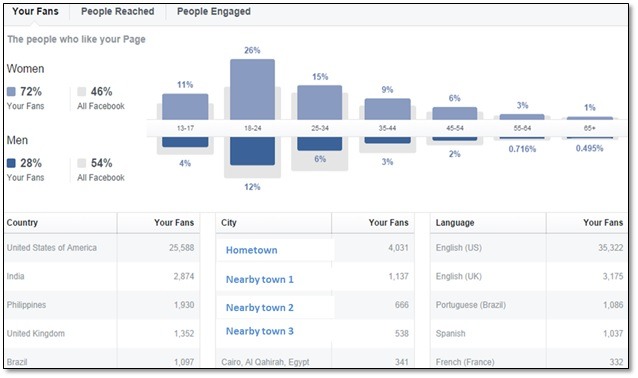In case you missed it earlier this week, Tom Taylor’s NOW column published the rank order of Facebook “likeage” for radio, according to Fred Stiening’s Streaming Radio Guide. It showed rogue talker Glenn Beck leading the field, followed by the ubiquitous Dave Ramsey, and EMF’s K-Love network coming in a strong third. All three have more than one million “likes” – the only radio brands to achieve that feat.
Stiening’s list begs the inevitable comparisons between stations, personalities, and brands, in much the same way Klout got our high school popularity memories stirred up a few years ago. And just like those adolescent perceptions of who was hot – and who was not – radio has often fallen into some of these same perceptual traps in its understanding of social media – must less reaping the benefits from it.
I looked at the Top 10 Classic Rock/Hits stations based on Stiening’s rankings, and here’s how it turned out:
It’s a fascinating list with some unlikely players – including three stations from the Carolinas – in the Top 10, including the format leader, WROQ, Entercom’s Classic Rocker in Greenville/Spartanburg, SC. It’s not much of a surprise that New York stations Q104 and WBAB show up, as well as The Sound and K-Earth in L.A. easily making the cut. But Classic Rockers like The River (Atlanta), KQRS (Minneapolis), and Q95 (Indianapolis) also are in this leader list suggesting that it’s not just about market size.
(I should point out that this list is incomplete. If you look at WCSX/Detroit on Facebook, you’ll see a station that’s amassed more than 40,000 “likes” which would easily place it in this Top 10 ranker. Same with WMGK/Philadelphia with more than 34,000 “likes.” This suggests there may be other omissions.)
We love lists, we covet order, and we are addicted to comparing ourselves to others. But the bigger question that’s circling around this Streaming Radio Guide ranker is whether “size matters” when it comes to truly being successful on Facebook. That’s not to take anything away from the stations on this list or from brands like Beck, Ramsey, and K-Love. They are all megawatt radio players, and they’re on this list because they’ve worked hard socially and they truly have brand dept.
But to truly assess success in the social space, it’s important to understand that aggregating “likes” on Facebook or “followers” on Twitter is just one dimension in the quest to truly have a meaningful relationship with a fan base. And it often doesn’t answer the question of whether programmers and personalities are truly creating social brands.
Stiening has a different view of what his ranker means. As he told Taylor, “Some radio operators appear to view social media as competition, drawing people away from listening rather than a tool to build an audience. Facebook popularity is not a substitute for radio ratings, but it is interesting to compare the two.”
And he’s right. Many radio managers and owners are still trying to get their heads around social. And amassing “likes” is not a substitute for bona fide fan connections that lead to a sense of community and loyalty. Since joining our company nearly four years ago, Lori Lewis has made that point again and again. As she noted in an article last year:
“The amount of ‘likes’ or ‘followers’ does not equate to creating brand impact nor does it measure the quality and depth of your fan relationships. It’s a vanity metric – that’s all it is. To tell your brand’s story socially is more than just about amassing ‘likes.’ It’s something that doesn’t come easy and that can’t be left in just anyone’s hands. The result is ‘random acts of social’ because there is no perspective about how to establish a direction that focuses on what matters to brands and their customers.”
Interestingly, Ev Williams, co-founder of Twitter, made a similar observation about the value of accumulating thousands of followers:
“The thing I think would be more interesting than followers is…retweets.”
And that speaks to the value of social media users who actually respond to tweets by retweeting, favoriting, replying, or clicking on a link in the tweet.
Williams went on to tell BuzzFeed News that a simple measure of how many followers a brand can aggregate “doesn’t capture your distribution.”
That’s the truth because those hundreds of thousands or even millions of “likes” doesn’t always mean that a brand is having impact where it counts – especially when it comes to local stations and their hometown personalities.
There are many brands that work these Facebook “like” metrics by hanging out in “Meme City.” By constantly posting cute, catchy memes of dogs playing poker or people falling on ice patches, the result is very frequently status updates that explode on Facebook, magnetically attracting hundred of “likes.”
But a look at Facebook metrics shows that a steady diet of memes can be hazardous to your social media help. The ill-gotten “likes” they can generate often come from people (or bots) well out a station’s city limits. In fact, often well outside the United States. And in these cases, this avalanche of “likes” turns out to be a vanity metric – and nothing more.
Below is the breakdown for a medium market station that posts many memes (we’ve masked their identify). On the surface, they’ve hit it out of the park with “likes.” But a look at Facebook Insights reveals just where many of these clicks are coming from.
The top half of the chart looks fine, and shows a Top 40 station that has strong appeal among females in the 13-34 year-old range.
But the bottom sections show the dirty little secret that is common to many brands that place a higher priority on “likes” than on meaningful connections with fans on social media platforms. About 7,000 of their “likes” come from the home market and surrounding towns as you can see in the middle column. But that means that the majority of their “likes” in the U.S. are from well outside this station’s metro.
And worse, they apparently have more fans in India, the Philippines, the UK, and Brazil than in their home market.
While these Streaming Radio Guide stats are fun and great conversation starters in station meetings or in the break room, they may miss the real opportunity that radio brands have to build and nurture strong bonds among their fans who frequent Facebook, Twitter, and other social platforms.
So don’t spend too much time in Meme City.
Thanks to Lori Lewis for her insights and guidance.
- Media And Technology In 2025: Believe It Or Not! - April 18, 2025
- In Radio, You Just Never Know - April 17, 2025
- The Secret To Making A Great Podcast (And Great Radio) - April 16, 2025







Finally! People starting to get it. The world isn’t and never was about quantity of relationships it’s about quality. Making connections in life is important not just in radio. Saying hi to strangers in a hallway isn’t.
Lazlo, thanks for chiming in. These “like” lists only serve to focus people and brands on the wrong priorities.
This gives insight to “why”: https://www.youtube.com/watch?v=oVfHeWTKjag
Yes, it’s a very interesting look at how Facebook “works.” Thanks for this, Ken.
(Oh no….here comes that Italian chick again)
Hi Fred.
Would it be safe to say that the reason for a boat – load of those ‘Philippines, the UK, and Brazil than in their home market’ “Likes” are from sites where you can ‘purchase likes for a price’?….IE; Tweet Angels is the more popular one. I’ve looked at many on air talent and radio stations with 20k…all the way up to 400k “Likes” on Facebook Pages….then see their engagement and or posts ‘likes’ was about as high as my new FB page I just launched. And I barely have 650 followers. Granted a ton of my listeners prefer Instagram & Twitter. Thoughts?
P.S….Great point Lazlo
Lu, I think your suspicions are correct. In fact, the video that Ken Dardis linked in an earlier comment is worth your time. It explores the seamy underbelly of the metrics, and is fascinating. Facebook has moved away from encouraging brands to aggregate “likes” and instead has refocused their emphasis on engagement. That said, there are still many stations that set “likes” goals each year, along with ratings goals. In an odd way, that activity may be counterproductive to the pursuit of becoming a social brand. Thanks as always for reading our blog and taking the time to comment.